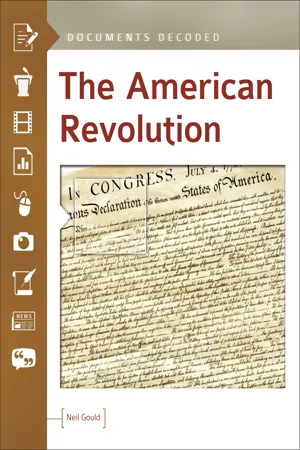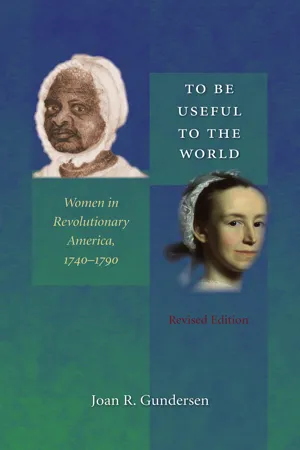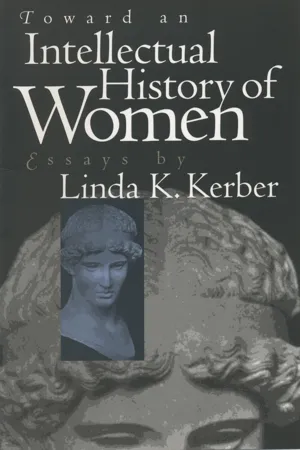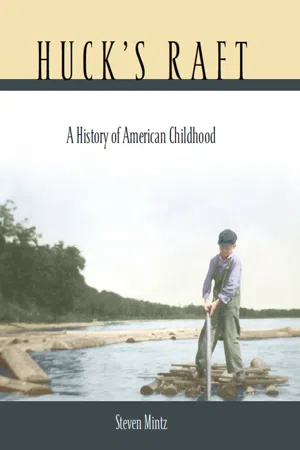History
Daughters of Liberty
The Daughters of Liberty were a group of women in colonial America who boycotted British goods and produced their own cloth and goods in support of the American Revolution. They played a significant role in the non-importation movement and were instrumental in promoting economic independence from Britain. The organization was a key example of women's involvement in the revolutionary cause.
Written by Perlego with AI-assistance
Related key terms
4 Key excerpts on "Daughters of Liberty"
- eBook - ePub
The American Revolution
Documents Decoded
- Neil Gould(Author)
- 2018(Publication Date)
- ABC-CLIO(Publisher)
Section III A Nation of AmazonsIntroduction
Women who actively supported the rebellion informally styled themselves “Daughters of Liberty.” They borrowed the term from the “Sons of Liberty” organized by Samuel Adams in Boston. While the Sons were engaged in sometimes violent protests (the Boston Tea Party is the most famous), Daughters engaged in boycotts of British goods, the manufacturing of clothing for the army, and fund-raising. It is ironic that the term “Sons of Liberty” was not the invention of American patriots. It was taken from a speech by Colonel Isaac Barre, a member of Parliament who supported the American cause during the debates over the Stamp Act (1765). He described the patriots as victims of “persons sent to rule over them . . .” [these actions], he said “have caused the blood of those sons of liberty to recoil within them.”George Washington recognized the importance of women’s activities and wrote that “the contribution of the association they represent exceeded what could have been expected, and the spirit that animated the members of it, entitles them an equal place with any who have preceded them in the walk of female patriotism. They have embellished the American character with a new trait; by proving that the love of country is blended with those softer domestic virtues, which have always been allowed to be more peculiarly their own.”Patriotic Sentiments of an American Woman in Advocacy of the Revolution (June 1780)
IntroductionThis letter, published in a Philadelphia paper, contains historical references to women who served as political leaders. Especially potent is the author’s mention of Joan of Arc, whose inspiring leadership freed France from British tyranny.On the commencement of actual war, the women of America manifested a firm resolution to contribute as much as could depend on them, to the deliverance of their country . . . They aspire to render themselves more really useful . . . I glory in all that which my sex has done, great and commendable. I call to mind with enthusiasm and with admiration, all those acts of courage, of constancy and patriotism, which history has transmitted to us . . . So many famous sieges, where the women have been seen forgetting the weakness of their sex, building new walls, digging trenches with their feeble hands, furnishing arms to their defenders, they themselves darting the missile weapons on the enemy, resigning the ornaments of their apparel and their fortune,1 - eBook - ePub
To Be Useful to the World
Women in Revolutionary America, 1740-1790
- Joan R. Gundersen(Author)
- 2006(Publication Date)
- The University of North Carolina Press(Publisher)
Daughters of LibertyThe active participation of women in the revolutionary war was effectively masked by the new domestic ideology. For some young women, the war had little effect on their daily routines except to provide opportunities to meet interesting young men in uniform or to limit social life due to absent young men. However, epidemics, food shortages, mob activities, and military actions along coast and interior ensured that at some point most women faced direct interruption of their lives due to the war.1 While Americans could reconcile such effects of war with the new domestic ideology, they would have to work harder to reinterpret women’s active roles and political mobilization during the war.Mass political mobilization was a trademark of the protest leading to independence. Women’s roles in church, market, and family ensured their participation in this mobilization. While men could be overtly and explicitly political, women’s motives often fused politics with religion. During the boycotts of the 1760s and 1770s, women’s home production took on political significance. Women often used overtly political language, such as calling themselves “Daughters of Liberty” when participating in large, public spinning events. However, the spinning matches often began with a church service, and clergy often received the results of the spinning. Of the more than forty-six spinning events in New England between 1768 and 1770—which involved 1,644 women—ministers hosted thirty of them and attracted 94 percent of all participants. Leaders characterized the boycotts as examples of virtuous denial, a discipline of piety familiar to women. As preachers theologically interpreted the struggle against the British each Sunday, women constituted the majority of their congregations.2Because the leaders of American protest in the 1760s and 1770s chose economic boycotts as a major weapon, the market decisions of ordinary women and men became political acts. Protest leaders could not afford to ignore women. A woman shopkeeper selling imported goods took a political stand simply by remaining open. However, most women shopkeepers had limited economic resources and could not afford to put their source of income on hold for long. Colonists pledged support for the boycotts by signing “Association” declarations. In Boston, for example, while in both 1768 and 1769 there were eight women who signed the Association, only two had signed both years. Leaders put pressure on women merchants to sign the Associations, if they did not volunteer. Those who refused, such as Anne and Betsy Cummings of Boston, found their names published in the local papers. They had no other source of income and thought their business was too small to attract interest. Bostonians who opposed the boycott pointedly began shopping at the Cummings’ store. Their customers thus further politicized their business.3 - eBook - ePub
Toward an Intellectual History of Women
Essays By Linda K. Kerber
- Linda K. Kerber(Author)
- 2017(Publication Date)
- The University of North Carolina Press(Publisher)
Colonies to Nation, pp. 382–83).29. For extensive discussion of this issue, see Linda K. Kerber, Women of the Republic: Intellect and Ideology in Revolutionary America (Chapel Hill, 1980), chap. 2, and Mary Beth Norton, Liberty’s Daughters: The Revolutionary Experience of American Women, 1750–1800 (Boston, 1980).30. For Laurel Thatcher Ulrich’s caution that spinning parties may not have represented collective support for the consumer boycotts and the war, see “ ‘Daughters of Liberty’: Religious Women in Revolutionary New England,” in Ronald Hoffman and Peter J. Albert, eds., Women in the Age of the American Revolution (Charlottes ville: University Press of Virginia, 1989). For the encouragement of spinning by radical leaders, see Nash, The Urban Crucible, pp. 333–37. See also Alfred F. Young, “ ‘Daughters of Liberty’ in the Cradle of the Revolution: The Women of Boston, 1765–1776” (Paper presented at the Conference on Gender and Political Culture in the Age of Democratic Revolution, Bellagio, Italy, July 1985).31. Douglass Adair and John A. Schutz, eds., Peter Oliver’s Origin & Progress of the American Rebellion: A Tory View (San Marino, 1961), p. 73.32. Peter Oliver saw hypocrisy in this effort as well. Of the Townshend duty boycott he observed: “Among the various prohibited Articles, were Silks, Velvets, Clocks, Watches, Coaches & Chariots; & it was highly diverting, to see the names & marks, to the Subscription, of Porters and Washing Women” (ibid., p. 61).33. Broadside, Nov. 6,1786.34. See Shy, A People Numerous and Armed, pp. 163–80, for an insightful analysis of how the militias forced conformity and how the armies enlisted those men with no other options.35. For shrewd comments on this point, see John Keegan, The Face of Battle (New York, 1976).36. Ulrich, “ ‘Daughters of Liberty.’ ”37. Pennsylvania Evening Post, Aug. 10, 1776, cited in Documents Relating to the Revolutionary History of New Jersey, New Jersey Archives, 2d ser. (1901), 1:161-62.38. Eilet, Domestic History, - eBook - ePub
Huck's Raft
A History of American Childhood
- Steven Mintz(Author)
- 2006(Publication Date)
- Belknap Press(Publisher)
16It is not accidental that early participants in the Revolutionary cause called themselves “sons” and “daughters” of liberty. The phrase “Sons of Liberty” grew out of the debate on the Stamp Act in Parliament in 1765. Charles Townshend, speaking in support of the act, spoke contemptuously of the American colonists as being “children planted by our care, nourished up by our indulgence . . . and protected by our arms.” Isaac Barre, a member of Parliament and friend of the colonists, responded to this condescending remark with outrage, declaring that the Americans were not children but “Sons of Liberty.” Sons of Liberty chapters formed in Boston and New York early in 1765. Growing out of the Committees of Correspondence that had been established in Massachusetts, New York, and Rhode Island in 1763 and 1764 to organize public opinion and coordinate patriotic actions against Britain, the Sons of Liberty organizations sought to prevent enforcement of the Stamp Act of 1765.17Young people played an active role in the ferment leading up to the Revolution. Teenage apprentices engaged in many mob actions that preceded the outbreak of war. Girls demonstrated their patriotism by participating in campaigns against the importation of British goods and in the production of homespun cloth. In an entry in her diary in February 1772, Anna Green Winslow, an eleven-year-old schoolgirl in Boston, described herself as “a daughter of liberty.” “I chuse to wear as much of our own manufactory as pocible,” she added. In 1770 in Boston, more than a hundred “young ladies” signed an agreement to refrain from buying or consuming imported tea. Betsy Foote, a Connecticut farm girl, was one of many young women politicized by Parliament’s actions. She recorded that after mending, spinning, milking, and performing various other chores, she carded two pounds of wood and “felt Nationly.”18
Learn about this page
Index pages curate the most relevant extracts from our library of academic textbooks. They’ve been created using an in-house natural language model (NLM), each adding context and meaning to key research topics.



